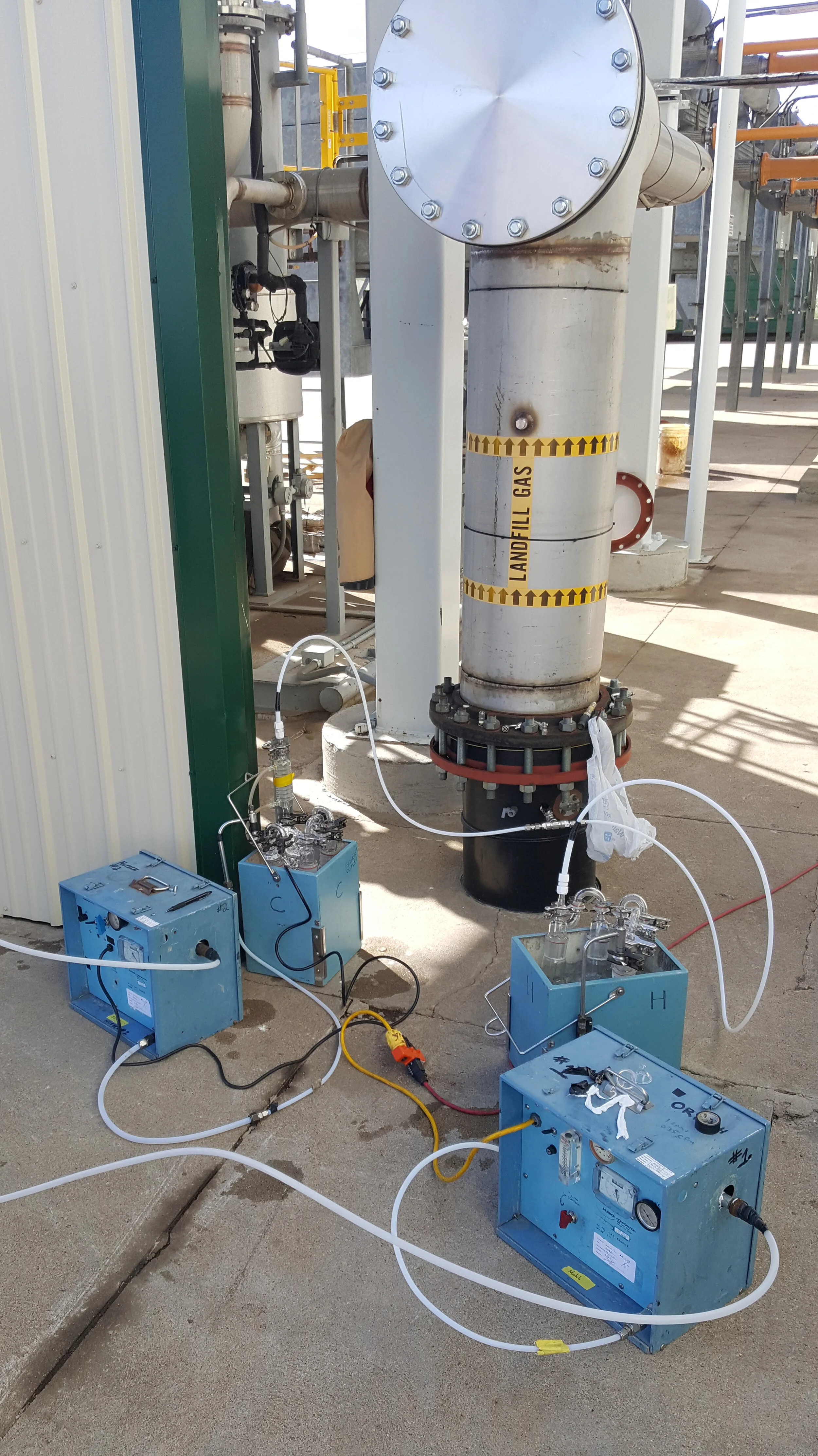SVOC and trace metal sampling
By: Rob Whitten
People have known about the practical uses of biogas for centuries. With recent advances in anaerobic digester technology, it is becoming increasingly viable as a renewable energy source. As a result, biogas that was traditionally flared to the atmosphere is now being used in applications such as power generation, transportation, heating, and injection into the natural gas grid. Many biogas producers such as landfills, waste water treatment plants, agricultural operations, and numerous other industries, are already taking advantage of this useful by-product. Many more will follow suit.
Unfortunately, it is not as easy as just plugging a biogas line into a generator and producing electricity. Raw gas requires upgrading and purification to reach viable methane concentrations. Conditioning and cleaning is also required to remove contaminants which can cause damage to equipment and transmission systems, and can pose health and/or environmental concerns. Certain questions become very important:
What is in your biogas?
What is the methane level?
What are the contaminant concentrations?
What is the heating value?
What compounds need to be removed or increased to make the gas viable?
Knowing the answers to these questions can greatly increase the efficiency and over-all success of a biogas operation. Biogas analysis can accurately and efficiently answer all of these questions.
The Benefits of Biogas Analysis
If the biogas is being sold to a third party like an energy company for injection into the gas grid, chances are that detailed analysis will be a requirement to ensure it meets the company’s specifications. However there are still benefits to biogas analysis, even if the gas is only being used on site.
First and foremost is the viability of the gas. Most biogas is unviable for use as a fuel when first generated as a result of the low methane and high carbon dioxide content. Knowing the initial concentrations of methane and other hydrocarbons gives producers an idea of what type of equipment is required to get their biogas to viable levels. Additionally this type of analysis provides the heating value of the gas which is beneficial for equipment sizing and billing purposes. The value of biogas increases with heating value.
Contaminant concentrations can also impact the usability of a biogas. Some contaminants such as moisture, particulate, sulfur compounds and siloxanes can negatively impact equipment and transmission systems. Other contaminants such as mercury, ammonia, sulfur compounds and some volatile organic compounds (VOCs) and semi-volatile organic compounds (SVOCs) can have a negative impact on the environment and pose health concerns for the end user. Knowing contaminant concentrations allows producers to procure the appropriate conditioning equipment to ensure their product is ready for use.
Some Common Contaminants and their Potential Impacts
Contaminants: Potential Impacts:
Sulphur compounds Health concerns, equipment damage/degradation
Ammonia Health concerns, environmental concerns (NOx)
Siloxanes Equipment damage/degradation
VOC’s Health concerns
Halocarbons Health concerns
SVOC’s Health concerns
Polyaromatic hydrocarbons Health concerns
(PAH’s)
Aldehydes and ketones Health concerns
Trace metals Health concerns, environmental concerns
Mercury Health concerns, environmental concerns
Moisture Equipment damage/degradation
Particulate Equipment damage/degradation
Speciated hydrocarbons and VOC sampling and dewpoint (moisture) monitoring
How can ORTECH help?
ORTECH provides comprehensive services to our clients to help them determine what is in their biogas.
Analysis of biogas samples in accordance with ASTM and GPA standards.
On-site biogas sample collection following approved GPA, EPA, Environment Canada, and ASTM methodology and rigorous health and safety procedure.
Experienced sampling and analytical team with the ability to mobilize internationally (Note: option to provide training and equipment to allow client to collect samples themselves and ship to ORTECH).
Development of biogas sampling plans and strategies.
Detailed reporting for clients and other stakeholders including government and regulatory agencies.


